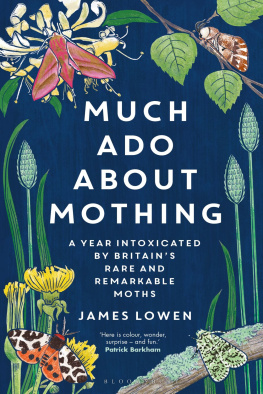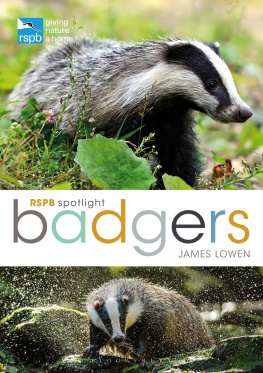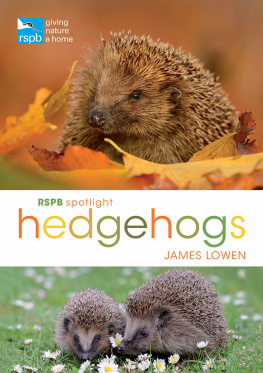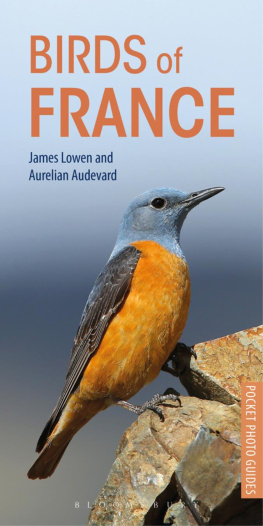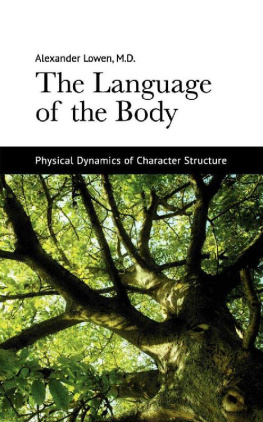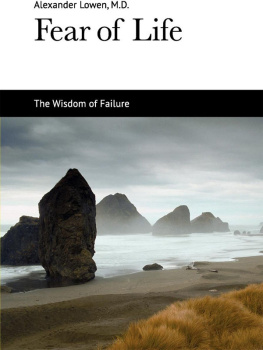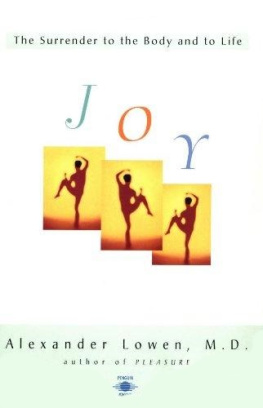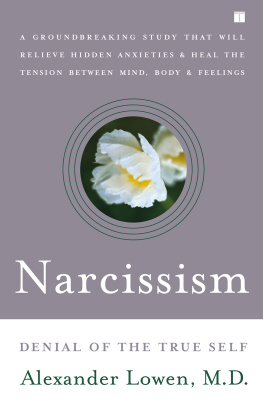James Lowen - Much Ado About Mothing
Here you can read online James Lowen - Much Ado About Mothing full text of the book (entire story) in english for free. Download pdf and epub, get meaning, cover and reviews about this ebook. year: 2021, publisher: Bloomsbury Publishing, genre: Detective and thriller. Description of the work, (preface) as well as reviews are available. Best literature library LitArk.com created for fans of good reading and offers a wide selection of genres:
Romance novel
Science fiction
Adventure
Detective
Science
History
Home and family
Prose
Art
Politics
Computer
Non-fiction
Religion
Business
Children
Humor
Choose a favorite category and find really read worthwhile books. Enjoy immersion in the world of imagination, feel the emotions of the characters or learn something new for yourself, make an fascinating discovery.
- Book:Much Ado About Mothing
- Author:
- Publisher:Bloomsbury Publishing
- Genre:
- Year:2021
- Rating:4 / 5
- Favourites:Add to favourites
- Your mark:
- 80
- 1
- 2
- 3
- 4
- 5
Much Ado About Mothing: summary, description and annotation
We offer to read an annotation, description, summary or preface (depends on what the author of the book "Much Ado About Mothing" wrote himself). If you haven't found the necessary information about the book — write in the comments, we will try to find it.
Much Ado About Mothing — read online for free the complete book (whole text) full work
Below is the text of the book, divided by pages. System saving the place of the last page read, allows you to conveniently read the book "Much Ado About Mothing" online for free, without having to search again every time where you left off. Put a bookmark, and you can go to the page where you finished reading at any time.
Font size:
Interval:
Bookmark:


To Maya, Sharon and Will

Contents
Research for this book was conducted with the help of a grant from the Authors Foundation of the Society of Authors, for which I am most grateful. At Bloomsbury, I thank Jim Martin and Alice Ward for making the book what it is. Thanks also to Charlotte Atyeo and David Hawkins for their input on the text. Jasmine Parker designed the lovely cover. The book would not have been possible at all without the support and love of my she-moth and caterpillar Sharon and Maya Lowen, respectively. I have never been so negligent of what actually matters in life. That I have been neither divorced nor disowned is testament as much to my girls tolerant understanding as to our emotionally robust tethering. But I learned to play my part too, realising the importance of interspersing my explorations aboard Le Bateau ivre with regular anchorage in the safe port of family. Nor would this book have happened without the companionship and moth nous of Will Wingman Soar or the initial introduction to moths (and ongoing companionship and advice) from James Hunter. Sharon Lowen, Sarah Morrison and Will Soar kindly read the draft text in its entirety, providing many useful comments.
A huge number of individuals and institutions provided advice, shared tales, authorised mothing trips, participated in adventures and/or commented on elements of the text. With no apologies for the length of this list, I am grateful to: @BritishMoths (on Twitter), Nick Acheson, Mick ACourt, Ian Alexander, Alison and Chris Allen, the Alwan family (Ali, Estelle, Matthew and Sienna), Dave Andrews, Mark Andrews, Dave Appleton, Atropos magazine, Back from the Brink, Chris Balchin, Barry Banson, Andy Banthorpe, the late David Barbour, Patrick and John Barkham, Iain Barr, Richard Bateman, Bawdsey Hall, Dorothy Beck, Matt Blissett, Bernard Boothroyd, Evan Bowen-Jones, Neil Bowman, Claire Boyes, Douglas Boyes, Bristol Zoological Society, British Entomological and Natural History Society, Dave Broadfoot, Gareth Brookfield, David Brown, Joe Burman, Burnet Study Group, Stuart Butchart, Butterfly Conservation, Zoe Caals, Martin Cade, Lucy Carden, Bex Cartwright, Martin Casemore, Matt Casey, Sarah Cassidy, Paul Chapman, Lucia Chmurova, Sean Clancy, Jon Clifton (Anglian Lepidopterist Supplies), Mark Cocker, Lisa Cox, Terry Crawford, Mischa Cross, Jon Curson, Simon Curson, Mark Davison, Tony Davison, Matthew Deans, Dorset Wildlife Trust, Ann and Andrew Duff, Dungeness Bird Observatory, Jon Dunn, Guy Dutson, Craig Edwards, Terry Elborn, Gary Elton, Environment Agency, Annie and Justin Farthing, Sue Fellowes, Gabrielle Flinn, Sean Foote, Forestry England, Martin Fowlie, Chris Fox, Steve French, Steve Gale, Adrian Gardiner, Abby Gibbs, Mark Grantham, David and Penny Green, Nick and Sian Green, Brian Hancock, James Harding-Morris, Kate Harris, Robin Harvey, Tom Hayek, Fiona Haynes, Sharon Hearle, Max Hellicar, Alexander Henderson, David Hermon, Josie Hewitt, Gary Hibberd, Martin Hallam, Malcolm Hillier, David Hipperson, Ben Hoare, Pauline Hogg, Gill Hollamby, Dave Holman, John Hooson, Ian Hunter, James Hunter, Nigel Jarman, Clive Jones, Graham Jones, Josh Jones, Ade Jupp, Kent Wildlife Trust, Mary Laing, Sophie Lake, Rupert Lancaster, Steve Lane, Andy Lawson, Marcus Lawson, Richard Lewington, Ben Lewis, Owen Leyshon, Durwyn Liley, Pili Lpez, Alison Lowe, Tom Lowe, Jenny and David Lowen, Amy Lowen, Chris Manley, Pete Marsh, Richard Mason, Steve Masters, Dougal McNeill, Peter Moore, the Morris family (Jack, Josh, Nina and Pete), Sarah Morrison, Moths of Poole Harbour, Andy Musgrove, Joe Myers, Steve Nash, Natural England, National Trust, Ross Newham, Lynnette Nicholson, Jen Nightingale, David Norgate, members of the Norwich and Norfolk moths WhatsApp group, Ashen Oleander, Chris Panter, Henry Page, Steve Palmer, Ed Parnell, Mark Parsons, Pensychnant Conservation Centre, Steve Peters, Luke Phillips, the Phillips family (Adrian, Monika, Kitty and Matthew), Stuart Piner, Portland Bird Observatory, Tom Prescott, Rare Invertebrates in Cairngorms project (a partnership between Buglife, Butterfly Conservation, Cairngorms National Park, RSPB and Scottish Natural Heritage), Zo Randle, Neil Ravenscroft, Catriona Reid, Ian Ricketts, Zo Ringwood, Ian Roberts, Pete Robertson, Ian Robinson, Helen Rowe, RSPB, Julian Russell, Sandwich Bay Bird Observatory, Ken Saul and members of the Norfolk Moth Survey, Debby Saunders, Phil Saunders, Scottish Natural Heritage, Harry Scott, Matt Shardlow, Dave Shenton, Neil Sherman, Tim Sievers, Alick Simmons, Alan Skeates, Murray Smith, Will Soar, Adrian Spalding, Christine Steen, Phil Sterling, Peter Stronach, Suffolk Moth Group, James Symonds, Andy Taylor, Darren Taylor, Stewart Taylor, Mark Telfer, Chris Thain, Kelly Thomas, Julian Thompson, George Tordoff, Mark Tunmore, Jacques Turner-Moss, University of East Anglia, University of Oxford, Nigel Voaden, Martin Wain, Dave Wainwright, David Walker, Mark Wall, Steffan Walton, Paul Waring, Jill Warwick, Nick Watmough, Mike Watson, Steve Wheatley, Jim Wheeler (Norfolk Moths), Paul Wheeler, Graham White, Steve Whitehouse, Chris Williams, Karen Woolley, Leon Woodrow, Stewart Wright, Mark Young and Mark Youles. My apologies to anyone inadvertently omitted.
For larger moths, I use the vernacular names published in the Field Guide to the Moths of Great Britain and Ireland (written by Paul Waring and Martin Townsend; Bloomsbury, 2017). For smaller moths, I follow the Field Guide to the Micromoths of Great Britain and Ireland (written by Phil Sterling and Mark Parsons; Bloomsbury, 2018). Micromoths are universally known by their scientific names, so I follow suit. However, where Sterling and Parsons include common names, I use those preferentially. On the odd occasion, I also take advantage of common names for micromoths that are in wide usage but do not feature in Sterling and Parsons.
I remember the date precisely: 7 July 2012. It was the day my life changed for ever.
It wasnt the day I got married. Nor was it when our daughter was born. It did involve a female, but it wasnt a girl or woman. It brought a coup de foudre , a wholly unexpected buckling of the knees, an unanticipated thumping of the heart. For she was arrestingly beautiful. And she was a moth.
To be precise, she was a Poplar Hawk-moth. She was sweetly furry, verging on velvety. This winged wonder was gawkily angular Darth Vaders TIE Fighter in animal form. She was wrapped in silver, banded with bronze and grizzled with iron filings. She was enduringly placid, only once flashing me a warning with fiery spots on her underwings. And she was huge and glorious and utterly wrong.
Because moths I knew this for a fact were small, brown and dull. At best, they were uninteresting and usually irritating. These eerie creatures of the night remained invisible yet destroyed my suits. Moths were malign phantoms from another realm. My attitude to moths was not, however, constant. Some days I hated them. At other times they merely stultified me. Occasionally I was even indifferent.
How I disappointed my nature-loving buddies! Most, like me, had long expanded their wildlife horizons from birds and mammals to butterflies and dragonflies. Many had jumped the ditch dividing things that move from things that grow, becoming increasingly enamoured by the unabashed ostentation of orchids. Again I was among their number. But not when it came to moths. When, I once asked sulkily, will I be so bored of other wildlife that I have to resort to getting kicks from moths?
Font size:
Interval:
Bookmark:
Similar books «Much Ado About Mothing»
Look at similar books to Much Ado About Mothing. We have selected literature similar in name and meaning in the hope of providing readers with more options to find new, interesting, not yet read works.
Discussion, reviews of the book Much Ado About Mothing and just readers' own opinions. Leave your comments, write what you think about the work, its meaning or the main characters. Specify what exactly you liked and what you didn't like, and why you think so.

